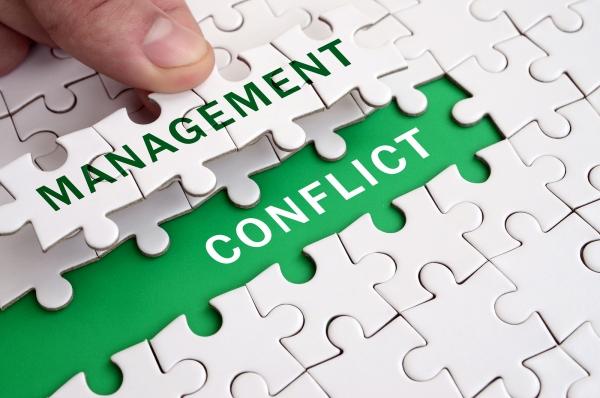When work teams get along in the workplace, one envisions a smooth running machine with few interruptions and no differences of opinion. However, this ideal situation is rarely realized. With rapid change, growth and workforce diversity, conflict is sure to emerge.
The word conflict may conjure up several thoughts: disagreement, lower productivity, diminished job satisfaction, and quality issues. These unfavorable characteristics may lead a manager to look for methods of conflict resolution or conflict management. These methods are designed to bring the scenario back to the smooth running operation that is desired. But what about the positive aspects of keeping conflict in the workplace?
In Patrick Lencioni’s book The Five Dysfunctions of a Team, he describes conflict as a necessity for effective team interaction. Lencioni recommends that the right kind of conflict is good and should be part of the team process. Conflict gets unique ideas on the table and raises problems to the surface. It is a more honest way of interacting in the team. By utilizing the conflict as an additional tool for communication, conflict can result in problem-solving, innovation, and increased employee engagement. However, it is the right kind of conflict that takes organizations to the next level.
What is the right type of conflict?
Let’s take a look at the two types of conflict.
Dysfunctional conflict. The negative or dysfunctional type of conflict has been described as affective conflict in research by Allen Amason. This conflict stems from personality differences and emotions. During turbulent times of growth and change, members of an organization may see an increased level of affective conflict among work team members, including those work teams in leadership roles. Studies in this area of conflict conclude that affective conflict is detrimental to overall team effectiveness.
Functional conflict. The functional type of conflict has been described by Amason and Lencioni as substantive or task conflict. This type of conflict focuses less on the people involved in the conflict and more on the processes involved in the conflict. Substantive conflict, when managed effectively, can lead to conflict resolution where both parties are more satisfied with the outcome, and the communication focuses on the work and less on personalities and emotion.
As human resource professionals and business leaders, what part can you play in the functional conflict

management centered on substantive conflict? Here are a few suggestions:
- Recognize which type of conflict you are observing in the workplace. Is it affective or substantive? Through questioning, observation, and listening, you may realize what has manifested itself as affective conflict may stem from real process issues or job ambiguity.
- Keep up-to-date job and work descriptions. When dealing with conflict that is task-oriented in nature, the job or work description may be a good starting place for conflict resolution.
- Coach conflicting team members to use productive language. Being accusatory or spewing personal attacks is not going to accomplish anything productive.
- Work toward collaboration. Collaborative conflict resolution is a win-win for both parties. Decisions are made with a higher level of participation from both parties, and both parties look for the best alternatives that benefit all involved.
Conflict is a natural part of the workplace, but not all conflict should be overlooked as dysfunctional. Organizations can welcome the right kind of conflict as another communication tool in the innovative problem-solving process.
Need help with leading effective teams or conflict resolution? MRA’s Training Experts can help you!



